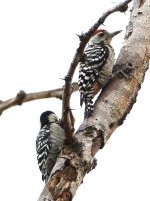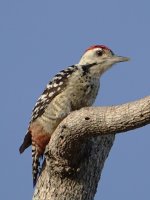Bertus
Well-known member

eBird and several other sites give for the Fulvous-breasted ( Dendrocopos Macei) a range map outside Thailand. And instead I find Freckle-breasted (Dendrocops Analis), not in Robson's book, having a range map that shops obs exactly here. I have seen this woodpecker many times now, is not shy at all , quite small, scattered trees in open country. How could Robson give a map of a species that does not occur in Thailand? or...?
, quite small, scattered trees in open country. How could Robson give a map of a species that does not occur in Thailand? or...?
 , quite small, scattered trees in open country. How could Robson give a map of a species that does not occur in Thailand? or...?
, quite small, scattered trees in open country. How could Robson give a map of a species that does not occur in Thailand? or...?



